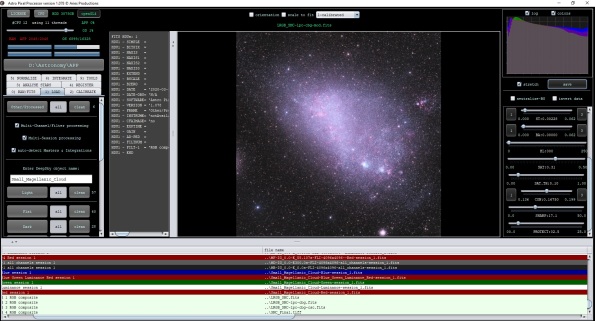Archive
Astro Pixel Processor – Learning about LRGB processing
I have been used to imaging in the past with RGB colour cameras, but now that the iTelescope remote telescope network has switched completely to cameras fitted with the more sensitive mono sensors and RGB filters I am forced to learn a new method of processing to combine RGB exposures with the luminance exposures. This is a good skill to learn as the images will potentially be more detailed with less noise and this is how the vast majority of astro imaging is done.
I saw the recommendation for the Astro Pixel Processor software on the iTelescope website and it seems to be well respected with good results so I thought I would give it a go on the free trial offer. Astro Pixel Processor can be found here https://www.astropixelprocessor.com/ There is an excellent video tutorial taking you through all steps to process an LRGB image of the Small Magellanic Cloud NGC292 here LRGB Tutorial The data was kindly made available by Christian Sasse,
The tutorial is in 9 parts and easy to follow although some of the menu items have changed in the latest update to those visible in the tutorial and there are additional options when loading files that are different too like the panel asking you about which session you want to use. I just went with the defaults and dropped all files into Session 1 every time and everything worked out fine.

The staged workflow is easy to follow and the software is actually very good at auto processing many of the early stages with minimal input. The fun really starts in the Tools section after you have combined the RGB image following calibration, registration and integration. Here you can calibrate star colours, remove light pollution and crop the image to suit. Then you can switch to the Preview section on the right and follow through the comprehensive Digital Development Process (DDP) including adjustment of the black/white point, saturation, sharpness, contrast, select the correct histogram stretch and much more. The changes are visible in real-time on the screen and when you get to a result you are happy with just save the stretched image as a Tiff or Jpeg.
I was pretty pleased with the results for a first ever process of LRGB data and look forward to using the software for comet and supernova imagery.

Small Magellanic Cloud processed in Astro Pixel Processor using data by Christian Sasse. Star Spikes added with Starspikes Pro in Photoshop Elements.